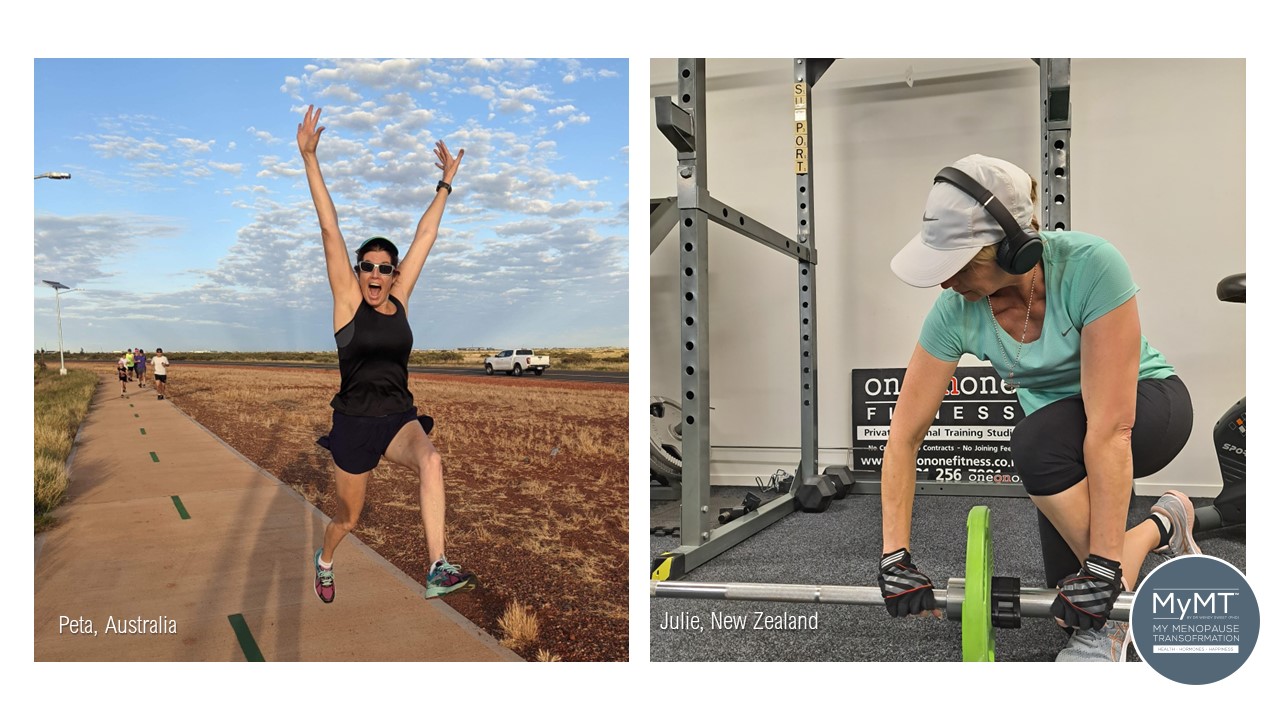It’s been hot in the Northern Hemisphere lately, really hot. Yes, the scientists blame climate change, but if you’ve been finding it harder to cool down after exercise or sports now that you are in menopause and feel that you can’t get rid of the heat, then you can also blame your changing skin and sweats glands during menopause.
A topic of discussion in my private coaching group for women exercisers on my programmes is about how much hotter they feel during and after exercise. For women who are still competing in a variety of sports, or doing heavy weight training or if they are a larger build, then I help them understand that the more muscle-mass women have, the more quickly the body overheats.
Aferall, muscle is metabolically active and women with higher muscle density have greater numbers of oestrogen receptors. I often tell them to talk to their Doctor about hormone replacement therapy if they are in peri-menopause and doing a lot of weight training as their muscles need the oestrogen!
But there’s something else going on with the change in heat regulation for women doing lots of exercise or sports, and that is how our skin and our sweat glands are changing as we age.
It’s why exercising in the heat can be so much more problematic for women who are going through menopause. Many women find that they don’t cope as well as they used to with their exercise performance or their recovery. Having experienced this myself, I put on my sport science hat and now understand why.
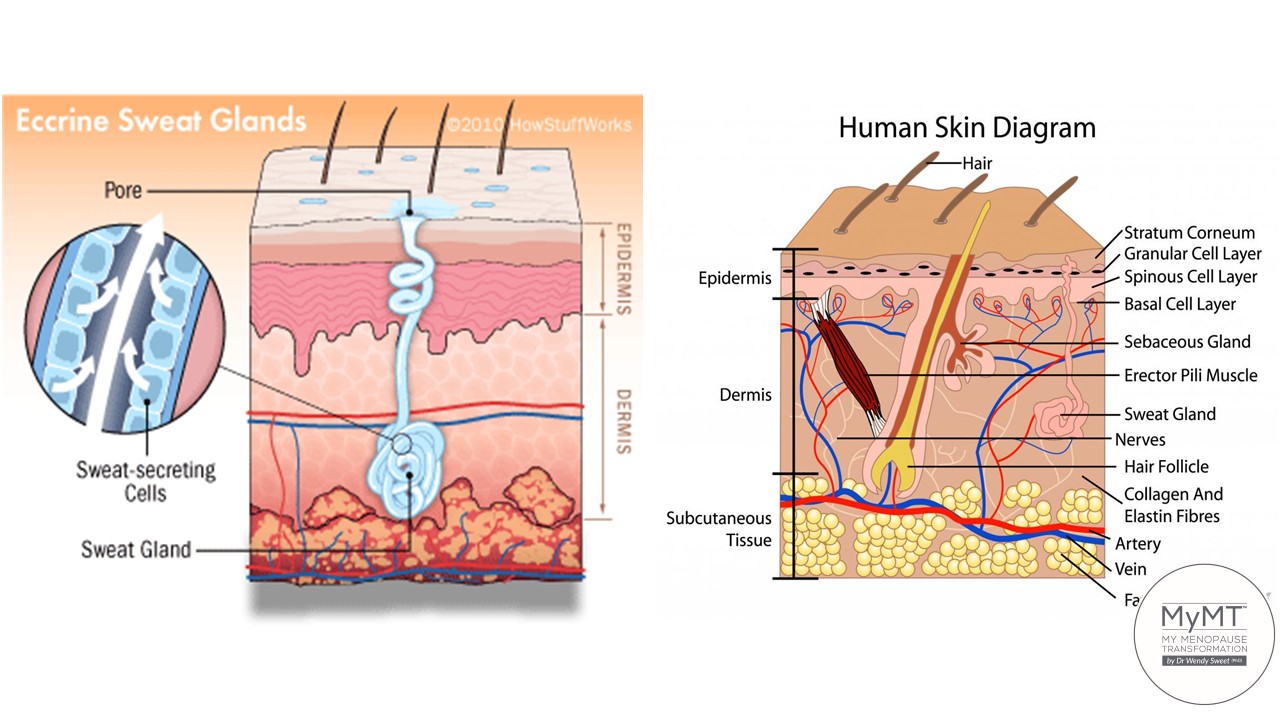
The skin is our largest organ.
As such, our skin also has high numbers of oestrogen receptors that help our sweat glands to open more widely. During menopause our skin changes and this accelerates age-related deterioration, resulting in:
- thinner skin,
- decreased elasticity of skin,
- an increase in number and depth of wrinkles (no surprises there),
- increased skin dryness, and
- decreased skin firmness.
Menopause also brings changes to our sweat glands and for those of you who are regular exercisers or play sports still, then you must be aware that menopause also brings along with it heat intolerance because your sweat glands move towards the surface of your skin and the secretory ducts become more tangled. (Ezure et al, 2021; Stevenson & Thornton, 2007).
As pre-pubescent girls, (also without much oestrogen) we over-heated more readily because we didn’t have mature sweat glands. This is why sports science text books are full of information about the dangers of children exercising in hot and humid conditions. Their body doesn’t get rid of heat very well because the sweat glands are still immature.
It’s the same with us as we transition through menopause and head into post-menopause. Our sweat glands and skin are ageing – especially those sweat glands located under the armpits. Therefore, our sweat production and our ability to dissipate sweat (release it through the surface of the skin) is vastly reduced as we move towards post-menopause. In other words, these changes lead to loss of heat tolerance. Fortunately, all those younger female athletes competing up in Birmingham at the moment, don’t have this problem. They still have oestrogen.
This is why your hydration matters too. Even for those athletes competing outside at the Games this week, it’s tough, simply because the body hates heat. It is always working hard to reduce the build up of heat and for women with greater muscle mass, more heat is produced.
Hence, the importance of hydration for those of you doing lots of exercise and or still competing. The first thing that dehydration causes, is reduced power. I used to state a quote from the ‘bible’ of exercise and sport physiology texts, ‘Wilmore, Costill & Kenny – Physiology of Sport & Exercise Science’, to students and this was, ‘Dehydrate a muscle by 3% and you lose up to 20% in power.’ It’s something I remind all my (older) athletes, especially those like Sarah below, who compete in the heat.
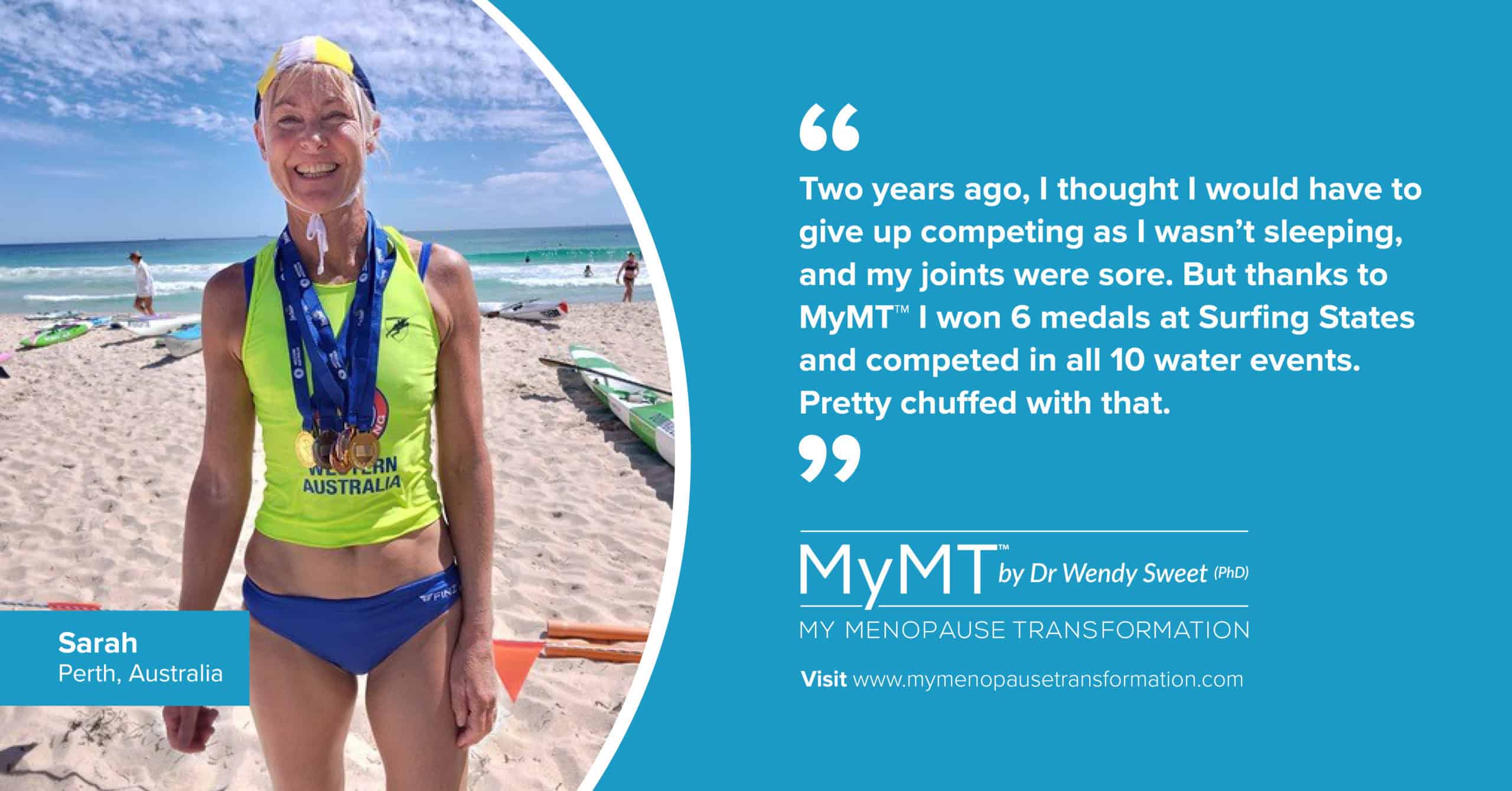
If you’ve been an exerciser for decades and you are used to exercising or playing sport still, then it’s important to know that now that you’re in your menopause transition, you need to change your fluid routine and your post-exercise cooling regime.
It’s what I teach women to do in the MyMT™ Rebuild My Fitness 12 week online programme, [this differs from the Circuit-Breaker and Transform Me programmes because it just focuses on exercise]. I’ve put over 30 years of exercise and sport science knoweledge into this fabulous online programme called Re-Build My Fitness, which has information specific to us as we transition menopause.
Do you workout in the heat? Here are my top tips for you:
The increase in fatigue when we exercise or play sports in the heat is an impairment that is caused by both central and peripheral factors. For example, exercise in the heat increases the use of muscle glycogen (glucose) 10-fold, potentially hastening fatigue. Even with exercise lasting only an hour.
Because declining oestrogen prevents our sweat glands from operating the way they used to, when body temperature increases, brain function decreases. This is why we need glucose when we are exercising or training in the heat as well. Your brain needs sugar! Furthermore, the glucose liquid is readily absorbed from the stomach into muscles to keep you going if you are exercising for over an hour. And size matters too. The more muscle you have, the more glucose you need to replace muscle glucose stores afterwards.
Optimal performance is possible only when dehydration and hyperthermia (over-heating) are minimized by ingesting ample volumes of fluid during exercise and by taking common-sense precautions in keeping cool.
Rolling the feet over an ice-cold water bottle is another strategy to action after exercising. Not only because the soles of our feet have lots of nerve endings and sweat glands, so this helps post-exercise cooling, but because many of you may have experienced plantar fasciitis or sore feet if you are a runner or play impact sports. As humans we have been designed to walk in bare-feet, which for those living in hot, humid countries, is an important part of the cooling mechanism.
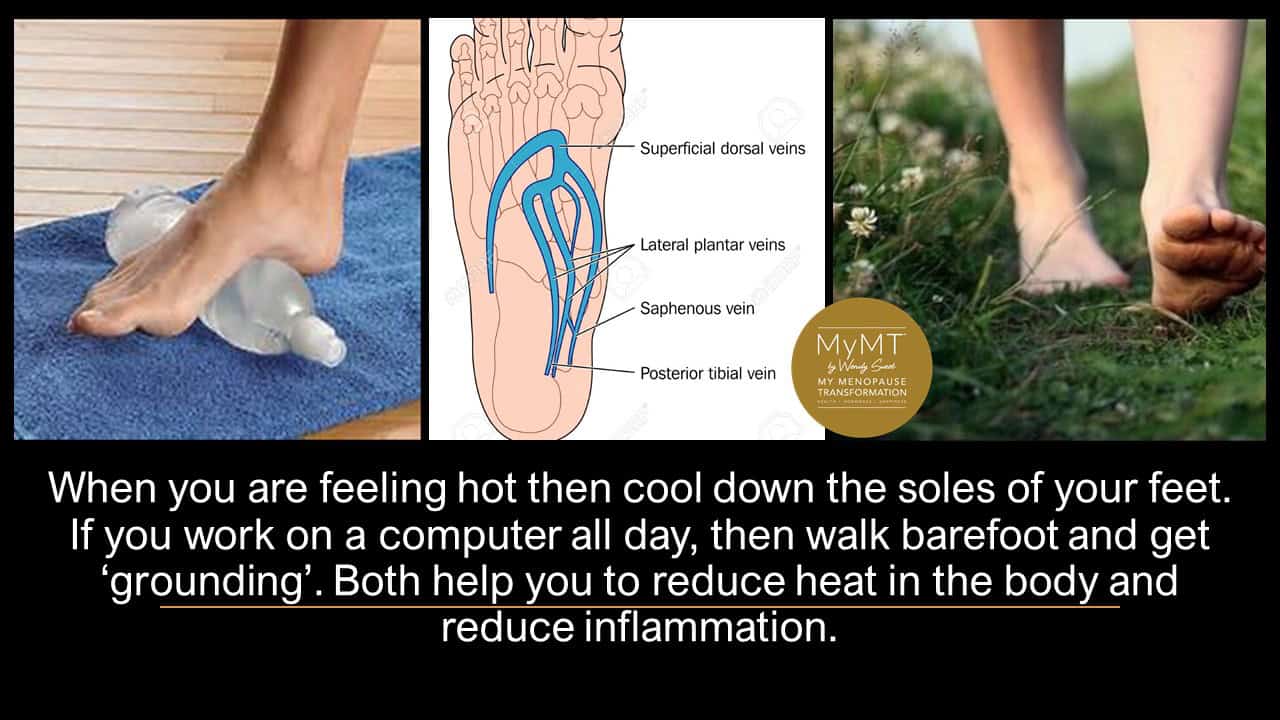
When athletes follow an aggressive fluid replacement and temperature regulation regimen, they prevent the pathway towards fatigue, already an issue for many women as they move through menopause.
When a muscle is dehydrated by only 3%, athletes can lose up to 20% of their power. Professional athletes should already know this, but even if you are a recreational athlete or exerciser, it’s an important focus for you. So, to help you with your heat tolerance to exercise, especially those of you exercising in the heat, then here is the regime to follow:
– Drink at least 2 glasses of cold water up to 15 minutes before exercise in the heat if you are exercising less than 60 minutes. Longer than this and you need to take water with you and keep it cold. If you exercise for longer than 75 minutes in the heat, then you will also need an electrolyte replacement drink.
– Have some beetroot, celery, spinach and apple juice within 30 minutes after exercising to replace glucose and to improve blood vessel dilation. As I tell women on my programmes, beetroot and celery have nitrates which convert to nitric acid, which helps to dilate blood vessels and restore blood pressure after exercise, especially salient for those of you doing heavy weight training.
– Have a shower after your exercise and run cold water over the soles of your feet. The soles of the feet are important in heat regulation.
– Keep drinking at least 1 glass of cold water, every hour for 3 hours.
– Slow down and conserve energy at least 3 hours after exercise in the heat. Your body needs to recover. Let it.
This is just some of the information that I have for women to help them maintain their exercise passion and transition through menopause without feeling exhausted all the time.
When we overheat, this increases inflammation and oxidative stress in cells and tissues, so exercising in the heat and being in menopause, with changing sweat glands, is a ‘double-whammy’ for women who, like me, have enjoyed exercising all their life.
If we don’t get our exercise right and make the necessary adjustments for our changing hormones, we end up with sore muscles, aching joints and restless legs and night sweats. We are the first generation of women to go into menopause in the context of all the exercise and sports that we have participated in over the years, and research consistently shows that women in mid-life are most at risk of dropping out of exercise which is partly due to not sleeping and feeling exhausted, but I believe it’s partly to do with the fact that they don’t understand how to adapt their exercise to match their changing hormones in menopause.
I hope you can join me on my Rebuild My Fitness programme when you can.
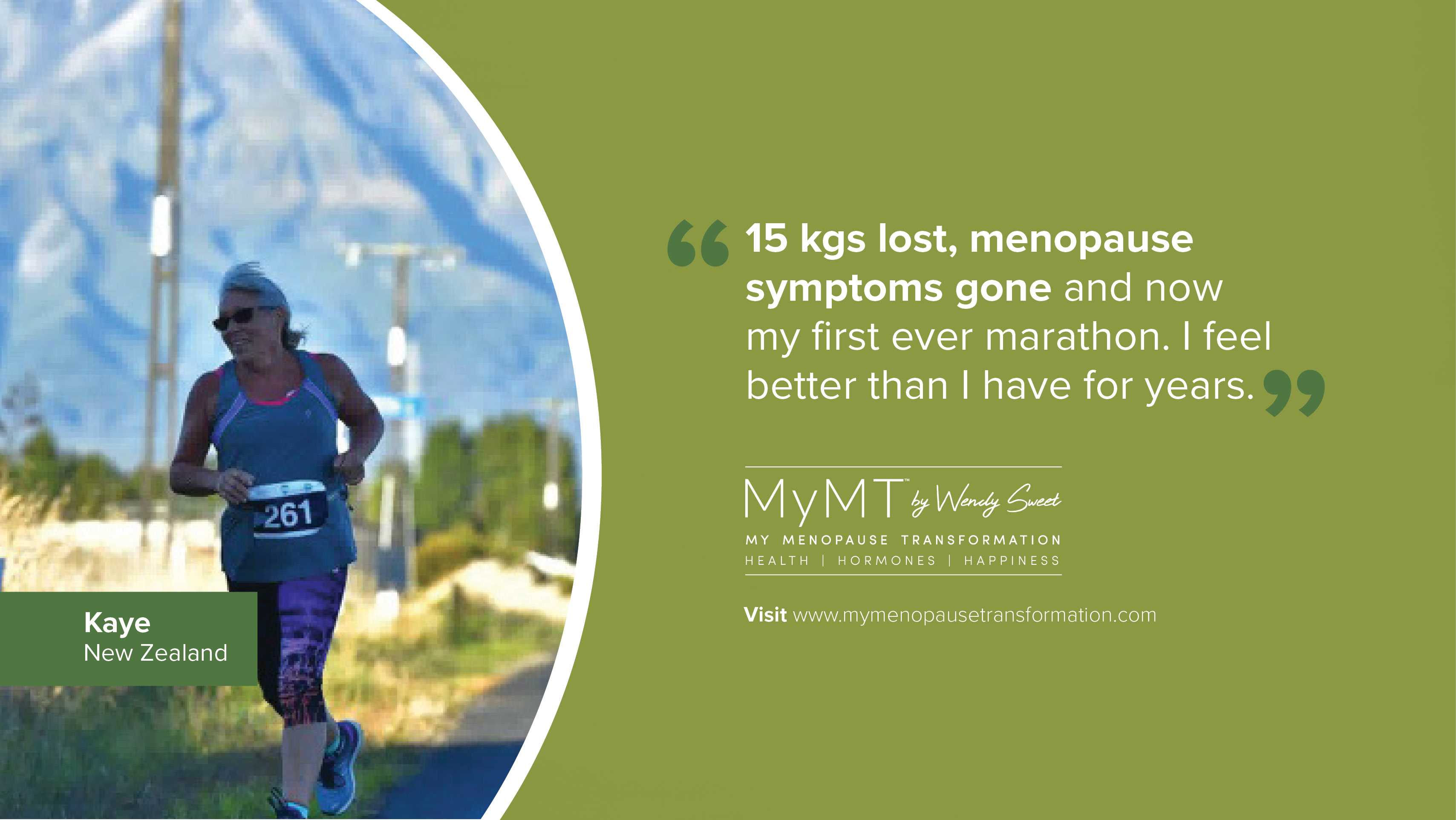
References:
Baker L. B. (2019). Physiology of sweat gland function: The roles of sweating and sweat composition in human health. Temperature (Austin, Tex.), 6(3), 211–259. https://doi.org/10.1080/23328940.2019.1632145
Ezure, T., Amano, S., & Matsuzaki, K. (2021). Aging-related shift of eccrine sweat glands toward the skin surface due to tangling and rotation of the secretory ducts revealed by digital 3D skin reconstruction. Skin research and technology : official journal of International Society for Bioengineering and the Skin (ISBS) [and] International Society for Digital Imaging of Skin (ISDIS) [and] International Society for Skin Imaging (ISSI), 27(4), 569–575. https://doi.org/10.1111/srt.12985
Stevenson, S., & Thornton, J. (2007). Effect of estrogens on skin aging and the potential role of SERMs. Clinical interventions in aging, 2(3), 283–297. https://doi.org/10.2147/cia.s798
